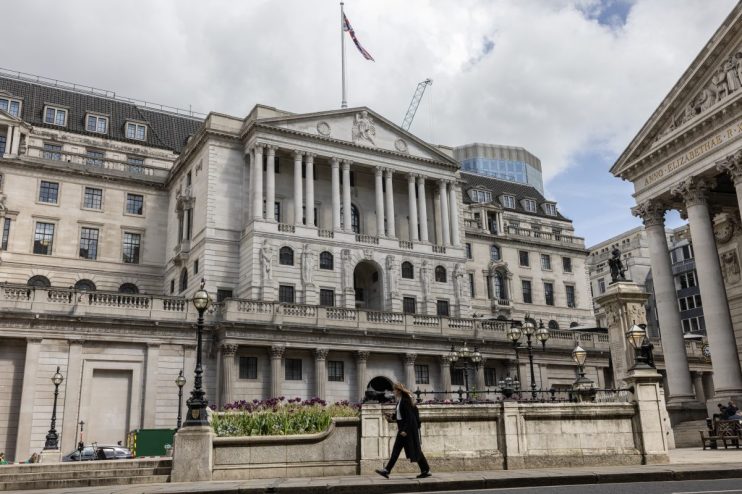Wage growth barely moves but unemployment creeps up as Bank of England considers rate cuts

Wage growth remained stubbornly high over the past quarter, but unemployment crept up, giving the Bank of England differing signals on how its interest rate hikes are impacting the economy.
Annual pay growth excluding bonuses averaged 6.0 per cent between February and April, according to figures from the Office for National Statistics (ONS), unchanged on last month and marginally below expectations.
Including bonuses, however, annual wages rose 5.9 per cent. This was unchanged from last month, after an upward revision to those figures, but higher than economists expected.
The continued stickiness in wage growth was likely influenced by the near 10 per cent increase in the National Minimum Wage in April, although markets will be relieved there was no big increase.
Taking into account inflation, real pay growth was 2.3 per cent, its highest level since August 2021.

Unemployment meanwhile rose to 4.4 per cent between February and April, up from 4.3 per cent previously. Economists had expected it to remain flat, although there are some question marks about the accuracy of the data.
The data also showed that the number of vacancies continued decreasing for the 23rd consecutive quarter.
The figures will be closely scrutinised as policymakers at the Bank of England consider when to cut interest rates. Wage growth has remained stubbornly strong throughout the year, prompting concern that it could contribute to sticky prices.
Yael Selfin, Chief Economist at KPMG UK said: “Today’s data are unlikely to warrant an immediate shift in policy from the Bank of England”.
Rate-setters have repeatedly said they need to see further progress on services inflation before cutting rates. Inflation in the labour-intensive services sector is heavily influenced by wage growth.
Forward looking surveys suggest there will be more progress on wage growth in the months ahead. Firms surveyed by the Bank of England in May expect wages to grow 4.1 per cent over the next year, the lowest level since the Bank first ask the question back in May 2022.
“We expect wage pressures to ease gradually in the coming months as the labour market cools, with unemployment rising relative to vacancies.” Monica Michail, an associate economist at the National Institute for Economic and Social Research (NIESR) said.
Hot inflation data for April has taken a June rate cut off the table, but economists still think August is on the cards if price pressures continue to moderate.
“We expect the MPC to stay put at its June meeting and reassess the incoming data flow over the summer before it embarks on cutting interest rates,” KPMG’s Selfin said.
The European Central Bank (ECB) cut interest rates for the first time in five years last week, but most investors interpreted the decision as a ‘hawkish’ cut and expect the ECB to wait before cutting rates again.
The Fed meanwhile announces its latest rate decision tomorrow with investors certain rates will be left on hold.
Elsewhere, economic inactivity rose again in the latest quarter to 22.3 per cent, largely driven by those aged between 50-64. Increasing levels of inactivity, driven by long-term sickness, has been a major problem for the UK economy over the past couple of years.